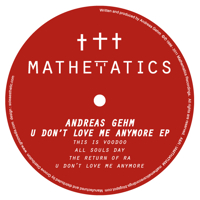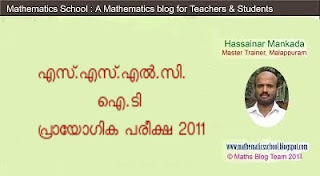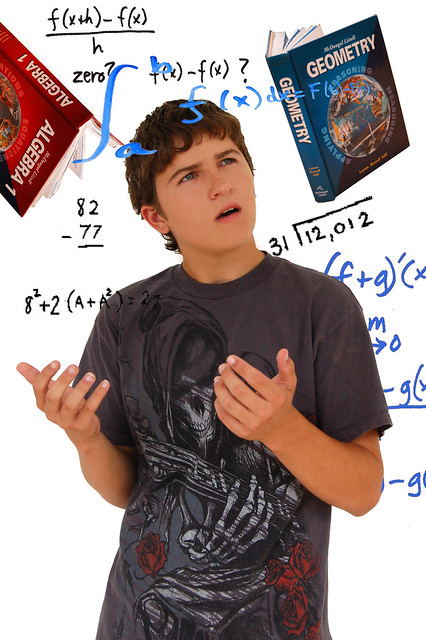 |
| Richard Skemp (photo ICME) |
There's an article I assign nearly every teacher prep class I teach: Richard Skemp's “Relational Understanding and Instrumental Understanding,”
Mathematics Teaching in the Middle School, September 2006 (A reprint from a 1976 article for the British Mathematics Teaching.) It's a bit of a tough slog, but touches on such a fundamental teaching issue, that I always get new things out of rereading it.
(Skemp's
obituary;
Republic of Math's take on this article.)
Recently I had a conflict with a class and an inservice, so I designed an online class for the students to try. Mixed results. On a 0 to 5 rating for being worthwhile, students gave it just better than a 2.5. On the other hand, if it could have replaced our usual class time, it may have indicated trouble in that direction.
But as a part of the class, they responded to questions on a Google doc, and their responses make for interesting reading in themselves, so I thought I would share selections.
1) What is the point of starting off with the Faux Amis story?
(A
faux amis are two words in different languages that sound similar but mean differently. Sopa (soup) and soap (jabón) are my favorite from Spanish. Skemp says that the ways we use "understanding" are as different as if they were faux amis.)
* I think that sometimes we may think we are saying one thing, but really we are saying something entirely different. This is, but should not be the case, when we are talking about how students understand mathematics.
* The Point of the Faux Amis story seems to get the reader interested in a scenario outside of mathematics. It’s interesting that what sounds like library really means bookstore and so on. Once this story is presented, it is easier to grasp what Skemp is trying to say about different meanings in the word “understanding” and “mathematics”.
*The Faux Amis story provides a generic overview of the topic covered by the article. It explains that though we may mean to say one thing, our students may understand what we are saying in a completely different context. As teachers, we must brainstorm the different ways our lessons could be interpreted by our students in order to ensure they grasp the content we teach.
2) What is your favorite example of “rule without reason”? Why?
* Right now my favorite rule without reason is “geometric mean.” While tutoring last night we were talking about similar right triangles. Turns out if you find the altitude from the right angle of a triangle, the length of the altitude is the geometric mean of the two parts of the hypotenuse. So if the altitude cuts a hypotenuse into 9 and 16, then the geometric mean is (9/x)=(x/16), so x^2=144, and x=12. You can also use the geometric mean to find the lengths of the sides. Why? Beats me.
* I would say my favorite rule without reason is the fact that x^0 = 1. This is always true but honestly I don’t even know why. It seems that many rules in math are like this, easy to remember and implement but they don’t make any sense at all.
* The most prominent “rule without reason” for me right now is the fact that the product of two negative numbers is a positive number. I never learned why this is, and honestly I still couldn’t sufficiently explain why. Even worse, I can’t think of any context to put it in.
* I agree with this statement. When we were trying to express and explain the multiplication of negative numbers in class, I had absolutely no idea how to explain why this is nor create a context for multiplying two negative numbers.
3) Does the author’s idea of looking for your own examples and his three reasons for it make sense? Why?
* Understanding is best shown with someones own words. There is no way to copy down and memorize an original thought unless it is one’s own. Using one’s own words to describe a mathematical concept is the best indication of fluency. Examples made in this fashion are easy ways to build relational understanding, the more difficult of the types of understanding.
4) Explain Skemp’s two kinds of mismatches (in the classroom) in your own words.
* There are two primary areas of mismatch that happen due to the Faux Amis of understanding mathematics. The first is that the teacher is striving for students to have relational understanding, but the student is satisfied with instrumental understanding. In other words, the teacher wants the student to understand why the problem works, but the student just wants to get the right answer. This is more common and probably more evident in the classroom. The second mismatch is that the student wants to understand the problem relationally, but the teacher is only teaching instrumentally. In other words, the teacher wants the students to repeat the same steps, or the same procedure, or just follow the rule for each problem. The student wants to understand why, or maybe wants to make more connections to other problems, but the teacher is limiting that.
5) Of his two kinds of mismatches, which is more common? Which is more of a problem for the teacher?
*I think that most people would say a student trying to understand instrumentally while being taught by a teacher who wants them to understand relationally, is the more common mismatches. However from my personal experience it is the other way around. I experienced instrumental teaching throughout high school and including some college courses. I also think that a student trying to understand instrumentally while being taught by a teacher who wants them to understand relationally, is more of a problem for the teacher because the teacher is trying to teach them for a deeper understanding but many students just want the surface knowledge needed to get something done as soon as possible.
6) What are Skemp’s faux amis in mathematics teaching? Is either one an issue in your math major classes here in GVSU?
No one tackled this! Skemp describes that mathematics itself is a faux amis, with two entirely different kinds of mathematics being taught: instrumental mathematics and relational mathematics. Instrumental math is a collection of procedures, where the goal is to recognize the correct procedure and apply it efficiently. Relational math is knowing what to do, why to do it, and why it works.
7) Would you add any advantages to his list for instrumental mathematics?
* I think if I could add one advantage to the instrumental mathematics it would be it is more time convenient, because overall I feel like teaching for instrumental understanding is just trying to get the students to be able to solve the problem by “plugging and chugging”. If that is all you are doing as a teacher and that is what the students are learning then the time it would take to cover the lesson would be much less, giving the teacher a lot more time overall to cover all the stuff that needs to be covered in the mathematics curriculum.
* I would add that instrumental understanding is advantageous for relational understanding. Being able to instrumentally understand a particular topic would benefit the learner when trying to reach the goal of relational understanding. A mathematics teacher could use the mold of procedures, and with the proper questioning of students about those procedures, to encourage students to think deeply about “why?” This will bring students closer to understanding important concepts, so they can ultimately reach relational understanding.
8) Would you add any advantages to the list for relational mathematics?
* Relational mathematics gives a meaning behind the instrumental aspects. It is said that math is so highly disliked by students because they see no purpose, and are constantly told that it will “make more sense later on.” This is not acceptable! Drawing upon the music example, we wouldn’t expect a student in middle school to learn music instrumentally and then be able to identify and draw upon that knowledge in their everyday life. I would definitely say that the relational understanding is going to be key in getting students to appreciate math again.
* Going along with the previous statement, relational mathematics gives meaning behind instrumental mathematics. Giving meaning to instrumental techniques can assist students in the leap from a mathematical problem to a real-life, meaningful situation for students.
9) Do you agree with the advantages that he lists for the two types?
* I do agree with the advantages and the disadvantages that he talks about. I feel as thought that each one does have its place in teaching and that there are many advantages to instrumental mathematics even though I feel like relational mathematics is better in the long run. I feel as though there are many situations where instrumental teaching does have its place and where trying to teach relational mathematics would just cause problems and would make things more confusing to the students. Many times such as learning that a negative multiplied by a negative is a positive is better when it is just given to the students instrumentally as compared with trying to explain why which they will learn in time.
10) What’s an example of relational understanding in your non-math life?
* In my non-math life, I’ve gained a great deal of relational understanding throughout my participation in cheerleading. In cheer, I was told to learn the position of “flyer” when stunting. To perform a stunt, you must first know what it is. The difference between an “elevator” and an “extension scorpion” would have little relevance to anyone who did not have some type of instrumental understanding of the sport. However, to successfully execute a stunt, you must understand exactly what you need to do with your body. A flyer needs to keep straight legs, pull up her own weight, smile ext, but these are all instrumental things too. To gain a relational understanding in cheer, I had to practice the stunts, and through this I learned body position, working with my stunt group, how/when to alter my positions ext. These are all things that someone who had not tried flying would not necessarily understand. Instrumental understanding in cheer is something that any person could gain through studying the sport, however, for relational understanding participation is vital.
* During the summer I work for a motorcycle safety course as a range assistant and when I started the job, I had no previous knowledge of how to ride a motorcycle. As I did all the miscellaneous jobs on the range, I heard the same safety tips over and over and saw hundreds of students practice. I learned where the controls were on the bikes and the best techniques for going around a curve safely or stopping quickly in an emergency. I heard the information over and over and could recite it, but I had no idea what it was like to actually drive a motorcycle. Last summer one of the coaches offered to teach me. It wasn’t until I actually started riding myself that I could begin to really understand what it was all about. I knew the little details but I didn’t have the whole picture, without practice and first-hand experience I couldn’t put it all together and actually control the bike. Until I reached relational understanding, there was no way I could succeed at riding.
* I started coaching a 3rd and 4th grade basketball team this year through a program called Upward, which aims to provide children with a faith based, competitive sports league. The league strives for equality amongst its players, and to accomplish this, the coaches make a roster of their players in order of ability. Come game time, there is a specific line-up procedure where the top 5 players start the first game, then the 2nd best-6th best start the second game, and so on. This is done so that all girls get equal playing time, and so that equally talented players are playing with each other. This prevents a team’s top 5 players competing against another team’s bottom 5 players.
11) What’s an example of relational mathematics understanding for you? How do you know?
* For me an example of relational understanding in mathematics would be my visual understanding of geometry and the knowledge that the use of a ruler and a compass will allow me to draw objects in euclidean geometry. This is a relational understanding because it is fundamentally what the original philosophers thought of when they constructed the system. The ancient Greek people did not condone the use of abstract thought as it exists today.
12) So, what about your classroom? Will you teach for one, or the other, or both? Why?
* Ideally I would teach for relational understanding because even though it’s much harder to teach and for students to learn, it sticks a lot better and it aids them in making connections to other mathematics. I think that this isn’t necessarily an achievable goal, however. With all of the standards I need to cover I won’t always be able to dedicate the time needed to reach a relational understanding. I already run into this in my tutoring. Just last night the student I tutor, Al, didn’t know how to find the “similarity ratio” of similar triangles. I was able to very quickly show him how to do it and he can now do it, but I don’t think he truly understands why. I could not have, however, spent my entire hour with him trying to teach him this because he has a test today and there were other things he didn’t understand either. I’m guessing I will have similar experiences in a classroom.
* I agree with this answer above, I think every math teacher should be striving to teach relational understanding but sometimes it is just impossible due to the time constraints we are presented with as educators. I think the best teachers out there can find the most important topics that are either continued on later in mathematics or are most pertinent to that specific class and teach those units/areas for relational understanding, this was the students will be exactly where they need to be later on in their math career. And as for the other units that don’t take such an important role in the curriculum I think the teacher just needs to cut their losses and teach it instrumentally so they can better cover the more important material. That is why I think teaching both is important, but teaching all relational understanding is ideal.
* I feel teaching both is important, and would do so in my classroom. Relational understanding is the goal, but would be nearly impossible to reach without instrumental understanding. I feel the idea is to use one’s understanding of mathematical procedures to develop understanding of underlying concepts. After reaching a conceptual understanding, students will be able to make connections with new material and be able to develop new procedures to reach a relational(conceptual) understanding. It’s the relational understanding that will allow students to think deeply and independently, helping them become adequate problem solvers and ultimately successful learners.
* In my future classroom, I think that I would incorporate both types of understanding into my curriculum. I think that instrumental understanding is an easy way for students to find solutions to problems and see the process. Instrumental understanding by itself, however, is not enough. Relational understanding gives meaning to the processes being completed and helps students relate to concepts and context.
* In my class, I will try to include more rational understanding into the lessons I will teach. As this can be incredibly difficult while teaching some subject matter, I understand that I will need to also teach instrumental understanding for some units. Once students have explored the subject matter further, I hope to have students build upon their instrumental understanding and that it will change into a relational understanding. Many of the standardized assessments students take only require an instrumental understanding of concepts, but in order for students to become better thinkers, they need to have mastered a level of rational understanding. Though it may seem pointless to teach anything but instrumental understanding, in the long run, students will gain more problem solving abilities and learning skills from mastering a relational understanding.
* My objective is to teach to students in a way that would enable them to gain relational understanding but I also think that there will be some instructional understanding. I feel as if the type of understanding used will be based on the school system. Further gaining relational understanding,in my opinion takes longer to grasp then instrumental understanding. So for this reason instrumental understanding may be used so that there is less time taken for each lesson. But in regards to this my ultimate is just to use relational.
* I feel like that when I teach I will use a lot of both types. I feel like if I had the time I would teach relational understanding and I feel as though for really important topics I will teach this way, however I also feel like with all of the requirements there is no way you can teach like this all of the time and be effective at it. Because of this I feel like I will end up teaching instrumentally most of the time just simply because it will allow me to get through the material faster and help the students understand best in the little amount of time given to cover each topic. However if individual students are confused or there is extra time available I will try to teach using relational understanding.
Photo credits (Flickr): liber, d3 Dan
Post Script: I took some video of a Fall 2011 class discussing these questions,
posted here.




























